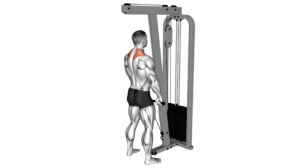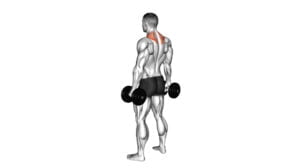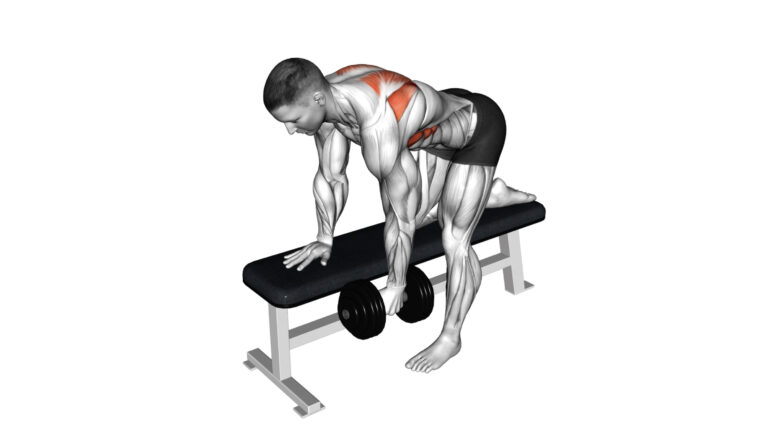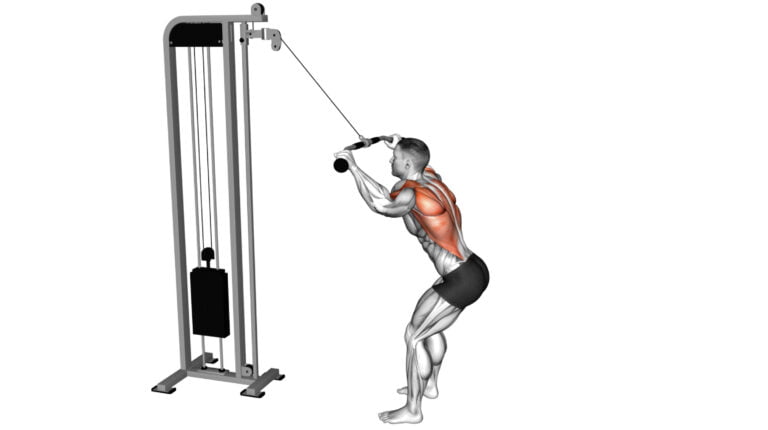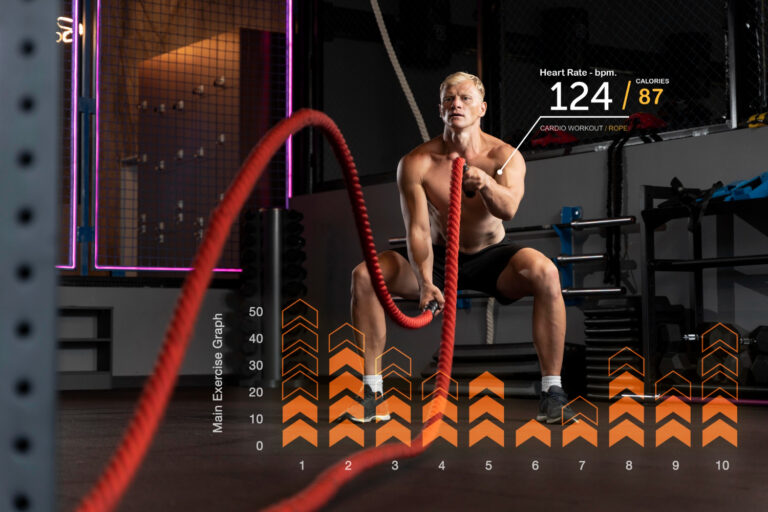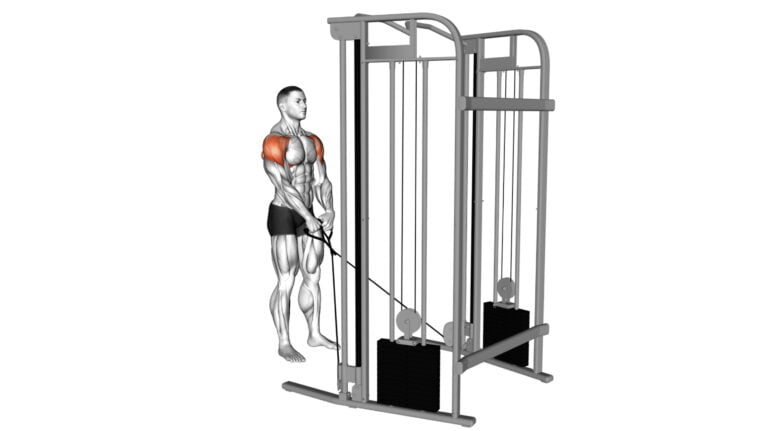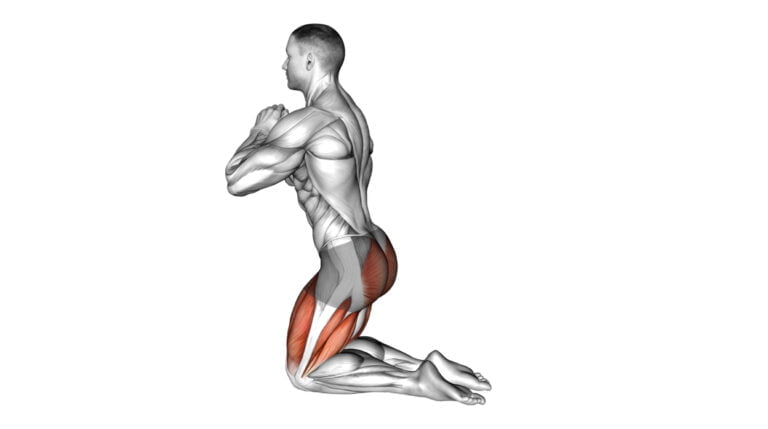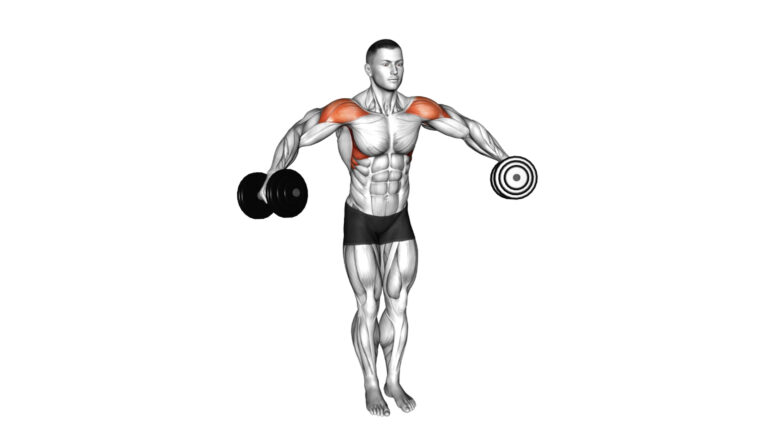10 Cable Exercises For Traps That Will Blow Your Mind!
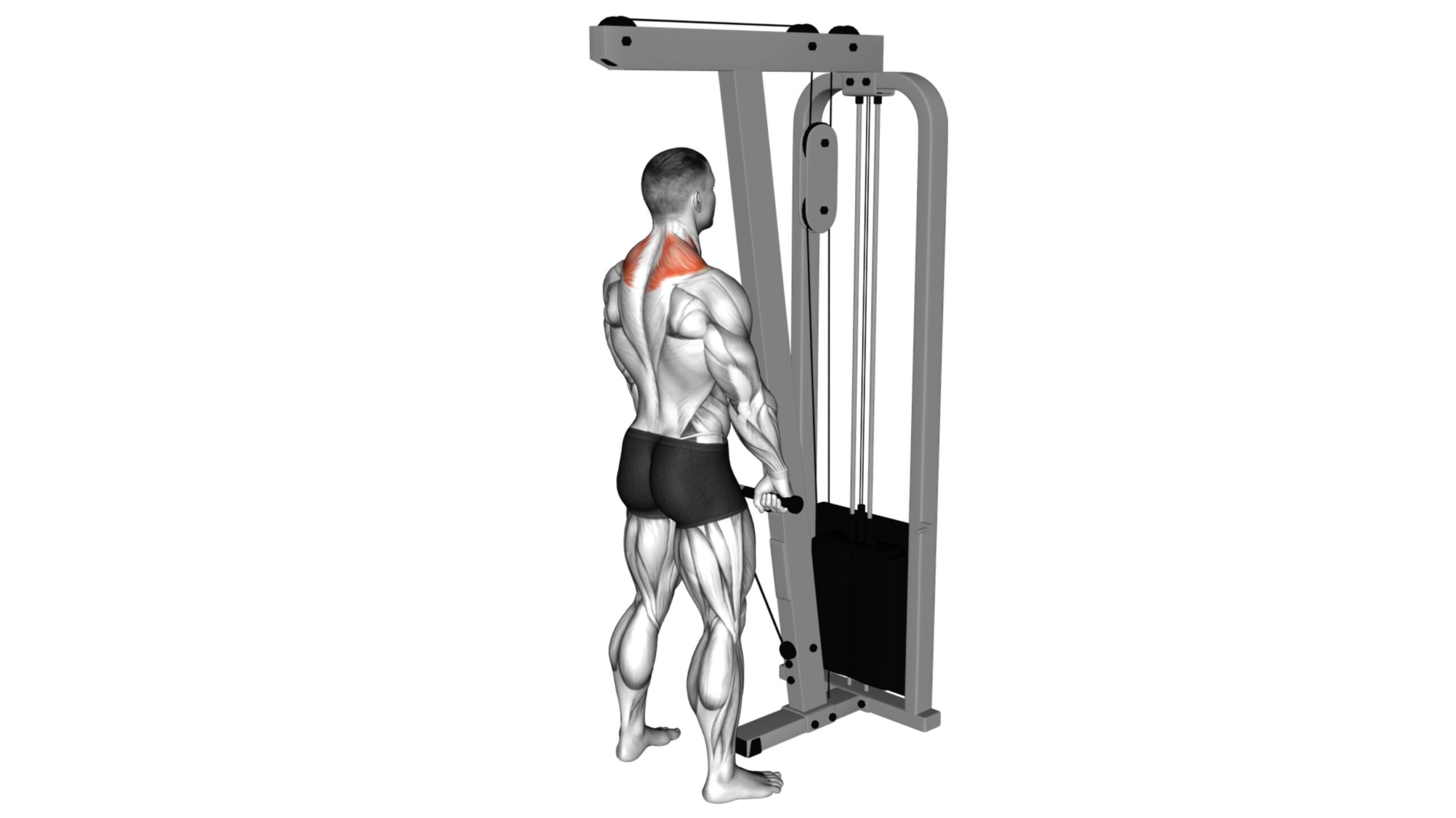
Building powerful traps is a common goal for many bodybuilders, but it’s often shrouded in myths and misconceptions about the best methods to achieve it. As someone who has spent years studying muscle dynamics and perfecting strength training techniques, I’ve discovered the effectiveness of cable exercises for sculpting the trapezius muscles.
These targeted movements not only enhance muscular definition but also ensure balanced development across all sections of the traps—upper, middle, and lower.
One critical fact that sets this guide apart is its focus on precision and control through cable exercises for traps. Unlike traditional free-weight exercises that can put undue stress on your joints, cable-based workouts provide constant tension throughout each motion.
This continuous load leads to more efficient muscle engagement and growth over time. Stick around — you’re about to transform your trap training routine.

Key Takeaways
- Cable exercises are great for building strong traps because they offer constant tension. This leads to better muscle growth.
- Working the traps with cable exercises can improve your posture, make you stronger in pulling movements, and boost athletic performance.
- Some top moves for shaping powerful traps include Cable Rear Delt Row, Cable Seated Face Pull, and Cable Shrug. These target different parts of the trapezius muscle.
- For best results, mix up your workouts with a variety of exercises aiming at 3-4 sets. Depending on your goals, adjust reps from 6-8 for strength or 12-15 for size and endurance.
- Start with simpler moves if you’re new and gradually add more challenging ones as you get stronger. This helps build a solid foundation while minimizing injury risk.
Anatomy of the Traps
The traps, or trapezius muscles, cover a big part of your back and neck. They help move your shoulders and support good posture. Knowing this helps you see why Cable Exercises For Traps are key for building strength in these areas.
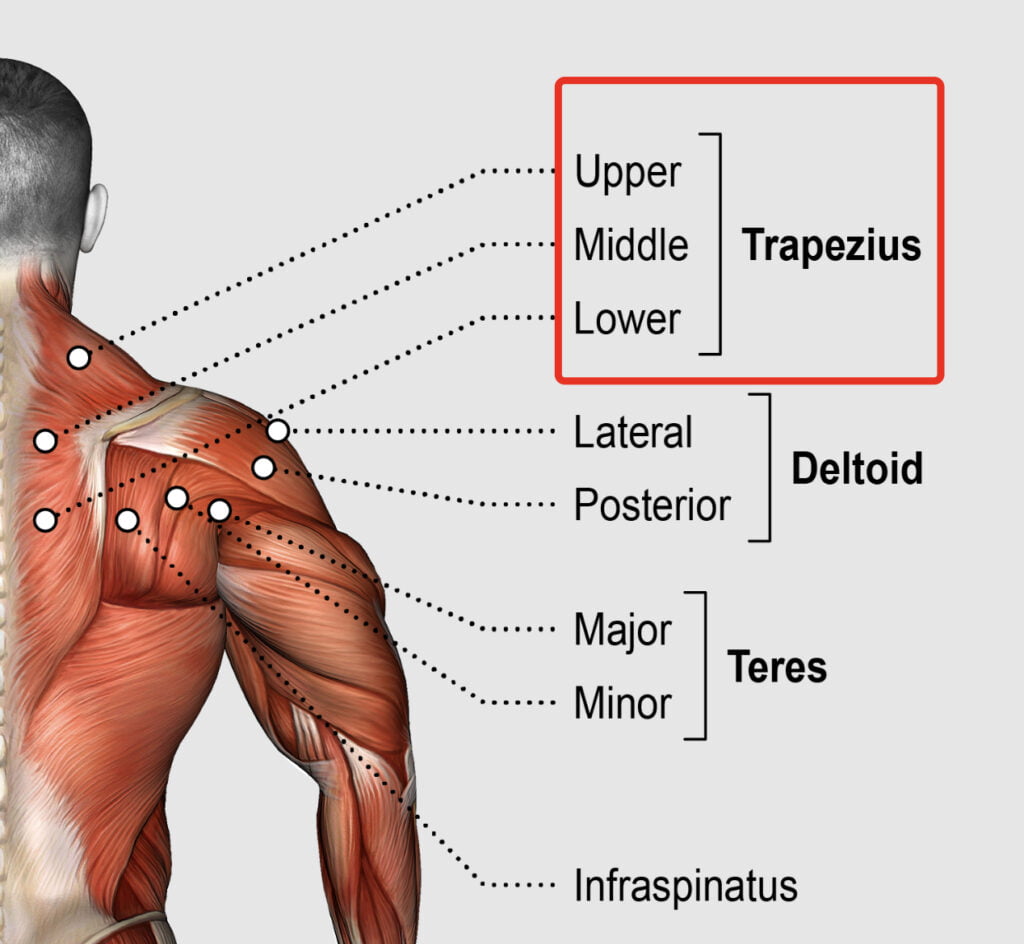
What are the upper, middle, and lower traps
Your traps are big muscles that start at the base of your neck and spread across your shoulders to the middle of your back. They play a huge role in moving and stabilizing your shoulder blades.
The upper traps help lift your shoulders up, like when you shrug. Middle traps pull your shoulder blades together, which helps with good posture. And the lower traps? They work with the middle ones to keep those shoulder blades down and back.
So, think about it – whether you’re lifting weights overhead or pulling something toward you, your traps jump into action. Stronger traps mean better support for all kinds of movements, from deadlifts to bench presses.
Plus, they give that well-built look around your neck and shoulders many bodybuilders aim for.
Functions of the traps
Moving from understanding the different parts of the traps to what they do, it’s clear that these muscles play a big role. They help in moving your shoulders and give support to your neck and upper back.
The upper part helps you lift your shoulders up, while the middle part pulls them back. And, the lower part? It works with the others to manage these movements smoothly.
They also kick into action when doing exercises like snatches or even when you pull something heavy towards you. This muscle group isn’t just for show; it aids in better posture and makes sure your shoulder joints are healthy.
So every time you shrug, row, or pull, thank your traps for the heavy lifting they do — both literally and figuratively.
Benefits of Cable Exercises For Traps

Cable exercises for traps help make your posture better. They also make you stronger when you pull things and boost how well you do in sports.
Improved posture
Strong traps help you stand straight and look tall. Working on your traps with cable exercises pulls back your shoulders, fixing that slouch from sitting all day. This means better posture, which is key for lifting heavy stuff safely and looking good.
Plus, a strong back keeps spine issues at bay.
By making those trap muscles stronger, you also make sure everything from your neck down to your lower back is in good shape. This way, you can keep lifting weights without hurting yourself.
Good posture isn’t just about standing up straight; it’s about staying injury-free so you can hit those fitness goals head-on.
Increased pulling strength
Building strong traps leads to a boost in your pulling strength. This means you can lift heavier weights in exercises like deadlifts, pull-ups, and rows. Stronger traps also help with grip strength, making it easier to hold onto those heavy bars and dumbbells during intense workouts.
With better pulling strength, you set yourself up for gains across your entire back – from lats to rear delts. These improvements show not just in lifting but also in day-to-day activities that require pulling or lifting movements.
Now, let’s turn our attention to how cable exercises enhance athletic performance..
Improved athletic performance
Stronger traps mean you can pull more weight. This is great for your overall athletic performance. Your traps play a big role in many sports and workouts. They help with movements like lifting things over your head or pulling something towards you.
Having strong traps also means better stability in your shoulders. This lets you move more freely and with more power. It helps prevent injuries too, so you can keep doing what you love without getting hurt.
Whether it’s swimming, pushing weights, or doing explosive exercises, strong traps support it all.
Top 10 Cable Exercises for Powerful Traps

Getting strong traps is a big deal if you want to look and perform better, right? Well, these top 10 Cable Exercises For Traps are your best bets for building that muscle up in no time.
1. Cable Rear Delt Row (with rope)
To start with Cable Rear Delt Row using a rope, you need to stand facing the cable machine. Grab the rope with both hands, palms facing down. Lean a bit forward from your hips and keep your back straight.
Pull the rope towards your face, keeping elbows high. This move works on those rear deltoids and traps, making them stronger.
As you pull, squeeze your shoulder blades together as if trying to hold something between them. This action helps in muscle growth and improves posture by working on the upper back strength.
Make sure to control the weight as you return to the starting position for a full range of motion without letting momentum do the work for you.
2. Cable Seated Face Pull (with rope)
Moving from the Cable Rear Delt Row to another great exercise, let’s talk about the Cable Seated Face Pull with a rope. This workout targets your upper traps and rear deltoids. It helps in improving posture by working on those back muscles you might not hit often.
You’ll sit facing the cable machine, gripping a rope attachment with both hands. Pull the rope towards your face, elbows high, keeping tension on your shoulder blades. This move can boost pulling strength and help fix imbalances in your shoulders.
Plus, it’s key for bodybuilders aiming for that well-defined back look.
3. Cable Standing Cross over High Reverse Fly
For the Cable Standing Cross Over High Reverse Fly, you start by setting up. Stand in the middle of a cable machine with the handles set above your head. Grab the right handle with your left hand and the left handle with your right hand – yes, they cross over! This criss-cross grip is key.
Now, step forward slightly, keep those feet shoulder-width apart for balance. Lean forward from your waist but keep that back straight.
Next comes the action part: pull those handles apart and down towards your hips. Feel it? That’s your traps working along with shoulders and upper back muscles. Make sure to move only your arms; everything else stays still.
Think about squeezing those shoulder blades together every time you pull down. Go for smooth motions; this isn’t about speed but full muscle engagement through control and precision.
4. Cable Upright Row
Moving from a high reverse fly, the cable upright row is next on our list. This exercise is great for hitting those traps and shoulders. Grab the cable handles with both hands, your palms facing you.
Stand straight, then pull the handles up towards your chin. Keep your elbows higher than your forearms as you lift. It’s a smooth move that can really work those upper muscles.
This exercise is not just about lifting; it’s about control too. You need to keep your core tight and move the weights slowly up and down. This way, you’re not just building muscle but also improving posture and strength in ways that matter every day.
Cable upright rows are perfect for bodybuilders who want strong traps without risking shoulder pain or injury from free weights or barbells.
5. Cable Seated Reverse Shrug
After mastering the Cable Upright Row, it’s time to target your traps from a different angle with the Cable Seated Reverse Shrug. This exercise focuses on strengthening and building your lower traps.
You’ll sit at a cable station with a straight back, grab the handles or bar with both hands, and pull your shoulder blades down and back. Keep your arms straight through this move.
It’s all about moving those shoulder blades without bending your elbows.
This technique activates the muscles in your upper back differently than other trap exercises do. By keeping the movement controlled and focused, you hit parts of the traps that are often missed.
The Cable Seated Reverse Shrug is great for improving posture and adding strength where bodybuilders need it most – in those hard-to-reach lower traps. Make sure to keep a slow pace; rushing can lead to using momentum instead of muscle power.
6. Cable Shrug
Moving from seated exercises like the Cable Seated Reverse Shrug, we shift our focus to standing moves – namely, the Cable Shrug. This simple yet effective exercise aims at strengthening your traps and improving posture.
Stand straight with feet shoulder-width apart. Grab the cable machine handles with both hands. Lift your shoulders up towards your ears in a shrug motion, then lower them back down slowly.
Keep your arms straight throughout this move.
Cable Shrugs are great for targeting those upper trap muscles spot-on. They also help in adding that much-desired bulk to your shoulder area for a more defined look. The key here is to use smooth movements and avoid using too much weight too soon.
Stick to controlled repetitions to maximize muscle growth and strength without risking injury.
7. Cable One Arm Bent over Row
The Cable One Arm Bent over Row is a solid choice for hitting those traps and back muscles with precision. You grab the cable with one hand while bending over, keeping your back straight as an arrow.
This move lets you focus on each side of your body without cheating — if one side’s weaker, it has to catch up. Your core gets in on the action too, working hard to keep you stable.
You’ll use a controlled motion to pull the cable towards your hip, then slowly let it return. It’s all about that muscle contraction and making sure your form’s spot on. The beauty? You get to adjust the weight as needed, so whether you’re pushing limits or going easy, it fits every session.
Plus, this exercise keeps things interesting by giving some love to those often-neglected muscles around the shoulder blades.
Next up is “Cable one arm twisting seated row” – another great way to build strength evenly across your traps..
8. Cable one arm twisting seated row
Cable one arm twisting seated row targets your traps and helps in building a strong back. First, sit down at the cable station. Grab the handle with one hand. Your palm should face in.
Pull back, twist your wrist so your palm faces your body by the end of the move. This twist adds extra work for your traps and makes sure they grow stronger.
Repeat this on both sides to keep balance in muscle development. It’s good for improving posture and pulling strength too. Since you’re working one side at a time, it helps spot weaknesses or imbalances in muscle strength.
Perfect for those aiming to get their physique competition-ready or just wanting a well-rounded shoulder complex.
9. Cable Cross-over Revers Fly
To do the Cable Cross-over Reverse Fly, start by setting up two cable machines on opposite sides. Stand in the middle with your back to one of the machines. Grab the handle from one machine with your left hand and the other handle with your right hand.
Your arms should cross in an “X” shape in front of you. Now, pull both handles out and back in a wide arc until your hands are behind you. This move targets your upper traps and shoulder blades like no other.
Think of it as opening a giant book with each rep, really stretching and then squeezing those trap muscles at the peak of the movement. Keep your core tight and stand tall through each set, focusing on control rather than speed or heavy weights.
This exercise shines for its ability to sculpt powerful traps by engaging them through a full range of motion, ensuring every fiber gets worked evenly.
10. Cable Standing Row
Cable Standing Row is a game changer for your traps. You stand, facing the cable machine, gripping the handle with both hands. Then, you pull it towards you, keeping your back straight and elbows close to your body.
This move targets your traps but also strengthens your shoulders and upper arms. The beauty of this exercise lies in its simplicity and effectiveness.
Achieve progressive overload by gradually increasing the weight; don’t rush it though – focus on form first! Next up? We’re looking at another powerful trap builder that should never be overlooked..
Recommended Sets And Reps
Moving on from the variety of cable exercises perfect for building powerful traps, it’s time to talk about how many sets and reps you should do. Everyone’s different, so getting this right can make a big difference in your gains.
For most trap exercises with a cable machine, aim for 3-4 sets. Start with lighter weights to warm up those muscles.
For reps, think about what your goal is. If you’re looking to build strength and power, go for fewer reps (about 6-8) with heavier weight. But if you’re all about that muscle size and endurance, bump up the reps to 12-15 while using a lighter weight.
And hey – mixing both methods into your routine could give you the best of both worlds! Remember to take enough rest between sets – usually around 60 seconds is good if you’re lifting heavy or up to 90 seconds for those higher rep ranges.
This balance ensures your traps are getting just what they need without overdoing it.
Sample Trap Workouts

If you’re ready to build your traps, we’ve got sample workouts for every level. From beginner to advanced, find the right routine and start shaping those muscles today.
Beginner Trap Workout
Starting with a beginner trap workout can set the foundation for stronger, more defined traps. For those just beginning, focusing on Cable Exercises For Traps is key. They help improve posture and boost pulling strength without overwhelming new lifters.
Start with Cable Seated Reverse Shrugs and Cable Shrug exercises. Both moves are perfect for engaging your upper body in a controlled manner. Aim for 3 sets of 12 reps each to get your traps activated and ready for growth.
Keep things simple yet effective by including the Cable Rear Delt Row next in your routine—this exercise targets not just the traps but also works the rear deltoids, contributing to better shoulder health and strength.
Stick to lighter weights initially; it’s all about mastering form over pushing heavy loads right away. Three sets of 10-12 reps will do wonders as you begin this journey towards building powerful traps.
Intermediate Trap Workout

Moving from beginner routines to something a bit more challenging, the intermediate trap workout steps up the game. This plan includes exercises like Cable Seated Face Pull and Cable Upright Row.
They help build those shoulder blades and strengthen your core. You’ll use a mix of movements that target not just the traps but also improve posture and pulling strength.
This workout pushes you harder with Cable Shrug and Cable One Arm Bent Over Row, focusing on retraction and internal rotation. It’s all about getting those powerful traps while keeping your form sharp.
The goal is to boost athletic performance without overdoing it. Sets and reps increase slightly, making sure your muscles get the right kind of challenge to grow stronger.
Advanced Trap Workout
For bodybuilders wanting a challenge, the advanced trap workout pushes limits with heavy weights and complex moves. Start with Cable Seated Face Pulls to warm up those muscles, aiming for fewer reps but maximum effort.
Mix in exercises like Cable Upright Rows and Cable Shrugs for strength. These aren’t just any lifts; they target your traps from all angles, making sure every fiber works hard.
Switch things up with Cable One Arm Bent Over Row and finish strong with a set of Cable Standing Rows. This isn’t about speed; focus on form and pushing your traps to their limits with each pull.
Keep your core tight and drive through those shoulders. The goal? To build power and size that turns heads.
Conclusion

Cable exercises for traps offer a solid path to stronger shoulders and better posture. They’re simple to add into any routine, making them both practical and effective. Doing these exercises can really change how you pull, lift, and even stand.
There are many ways to learn more about getting the most from your trap workouts, so keep exploring. Believe in the power of consistency with these moves for real results. Every rep brings you closer to those powerful traps you’re aiming for.
FAQs
1. What are the best cable exercises for my traps?
For your traps, try barbell shrugs, lat pulldowns, and face pulls with a cable machine. These hit your shoulder blades just right.
2. Can I use other equipment besides cables to work on my traps?
Yes! Besides cables, you can use dumbbells for the dumbbell bench press or even kettlebells for added strength training.
3. How do squats help with trap development?
Squats, especially when you add a partial squat into your routine, boost core strength which supports better posture and trap growth.
4. Are there any exercises for my traps without using weights?
Sure thing! Push-ups and pull-ups strengthen not just your arms but also engage those trap muscles big time.
5. Why is it important to include exercises like the incline bench press in my workout?
The incline bench press targets not only your chest but also engages your front delts and triceps – helping balance muscle growth around your shoulders including those traps.
6. What’s a good way to make sure I’m working out my traps correctly?
Focus on form – keep those elbows dropped during workouts like barbell rows; this ensures you’re engaging the right muscles effectively.

Author
Years ago, the spark of my life’s passion ignited in my mind the moment I stepped into the local gym for the first time. The inaugural bead of perspiration, the initial endeavor, the very first surge of endorphins, and a sense of pride that washed over me post-workout marked the beginning of my deep-seated interest in strength sports, fitness, and sports nutrition. This very curiosity blossomed rapidly into a profound fascination, propelling me to earn a Master’s degree in Physical Education from the Academy of Physical Education in Krakow, followed by a Sports Manager diploma from the Jagiellonian University. My journey of growth led me to gain more specialized qualifications, such as being a certified personal trainer with a focus on sports dietetics, a lifeguard, and an instructor for wellness and corrective gymnastics. Theoretical knowledge paired seamlessly with practical experience, reinforcing my belief that the transformation of individuals under my guidance was also a reflection of my personal growth. This belief holds true even today. Each day, I strive to push the boundaries and explore new realms. These realms gently elevate me to greater heights. The unique combination of passion for my field and the continuous quest for growth fuels my drive to break new ground.





